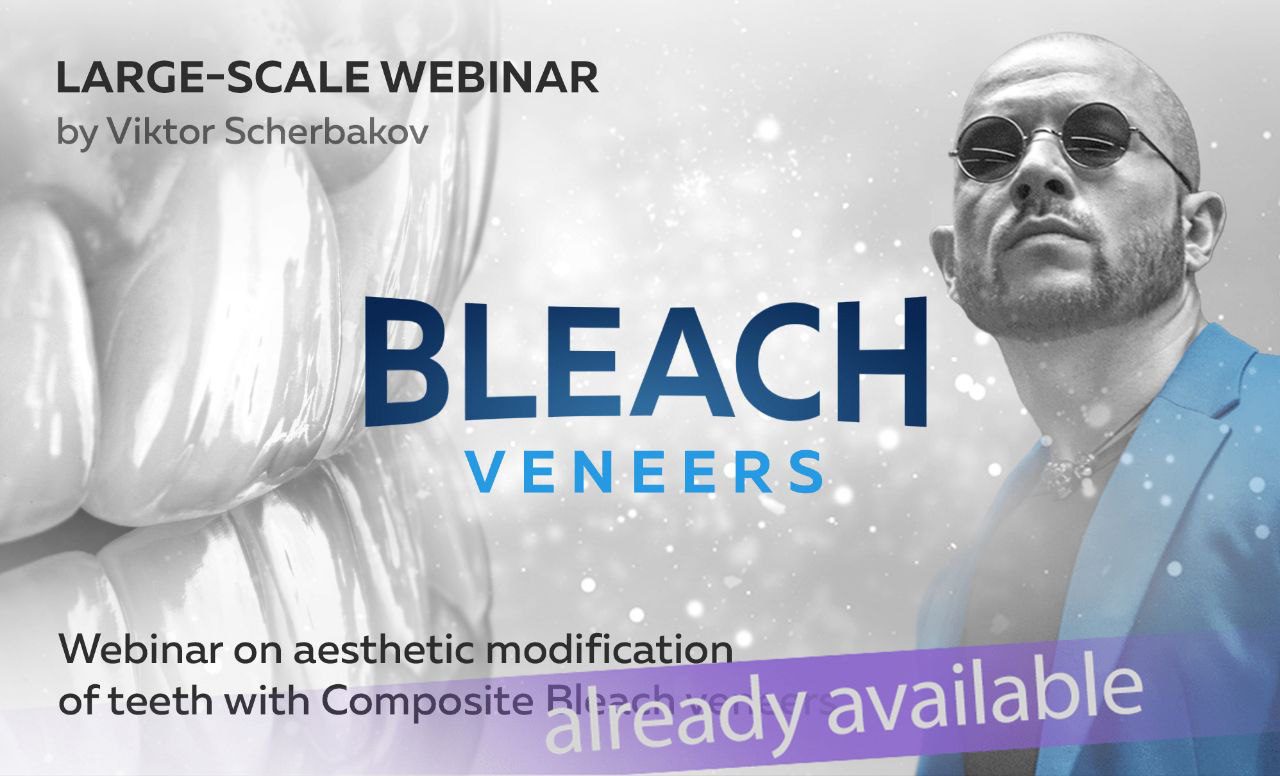Bleach veneers – Viktor Scherbakov
Bleach veneers – Viktor Scherbakov restoration is a large field of aesthetic reconstructive dentistry techniques, a separate genre that becomes an effective instrument and a powerful marketing tool in the doctor’s hands if it is used with a right approach.
In this webinar, we will study in detail all the stages of the implementation of Bleach restorations in various shades configurations, with different tooth positions and even in the conditions of strong abrasion. Among other topics we will also discuss manual techniques in the doctor’s work, the principles of post-surgical care, finishing of the composite, and many more.
Topics :
Part 1. Philosophy, sense and subject matter of bleach-aesthetics
– Perspectives of bleach-restoration field implemented in direct method;
– What advantages does this type of aesthetic intervention offer for the doctor and the patient? Analysis of the difficulties and dangers you may face;
– Psychology of bleach-patients
– Features of the behavioral tactics of the doctor
– What are the mandatory conditions for the clinical performance of bleach restorations and direct composite veneers to ensure a favorable long-term prognosis.
Part 2. Shades and layers formulas
– 3 main types of bleach restorations
– Which composite materials do perform best for making bleach veneers? How wide is the palette of white shades?
– Controlling methods of the thickness and optical density of the material which help to smoothly mask the previous teeth color;
– What methods and materials to use for reproducing the natural optical anatomy (translucent cutting edge and mamelons) when creating bleach restorations.
– Analysis of restoration techniques: Silicone Index technique, “free” modeling
Part 3. Morphology of anterior teeth as a factor that resuscitates the appearance of restoration.
– Morphology of the vestibular surface of the incisors.
– Features of microrelief and the role of texture in aesthetic perception
Part 4. Finishing of anterior restorations.
– The meaning of finishing. Why is this part of the work critically important? Requirements to the quality of implementation.
– Finishing protocol. Analysis of the features of the procedure and impact on the composite surface made by various rotating tools and polishing systems.
– Search for the most effective tools for polishing.
Part 5. Clinical sequence of work. (in the format of a demonstration on special ZenGears phantoms).
– The most convenient options for isolating the working field.
– Features of preparation and adhesive preparation of teeth.
– Application and adaptation of the material. Adding portions to the side surfaces. How to avoid darkness in the interproximal areas.
– Processing of the neck area.
– Formation of morphology, texture and finishing














Reviews
There are no reviews yet.